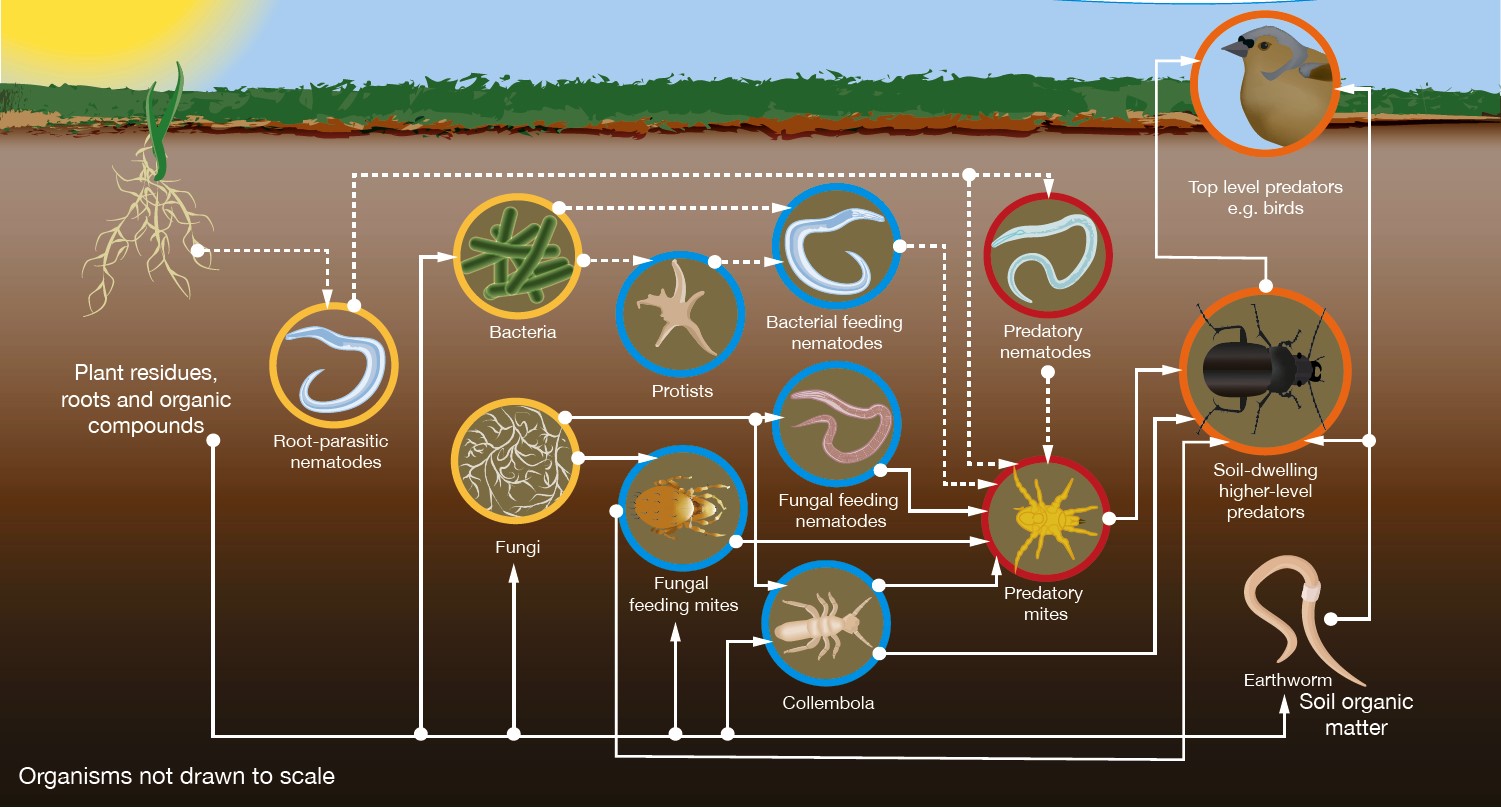- Home
- Knowledge library
- The soil food web and nutrient cycling
The soil food web and nutrient cycling
The soil food web is a common grouping of soil organisms according to what they eat (i.e. trophic groups). Trophic levels also reflect the flow of energy through the soil food web, as all organisms consume food to get the energy they need to grow and reproduce.
Back to: The function of soil biology
Nutrient cycling
Every time an organism feeds, waste nutrients are excreted in a form that is more available to plants. Plant roots are hotspots for such feeding activity so plants can readily take up these nutrients leading to the production of more plant material, supplying new organic matter to the soil and completing recycling of nutrients.
Predators (e.g. protists, nematodes, mites and springtails) are important to drive the release of nutrients and make them available for plant uptake. Soil fauna can account overall for 30–40% of net nitrogen released into plant-available forms. The remaining nutrient is released by microbes or the enzymes they produce.
Trophic levels in the soil food web

Basal trophic level – Food sources that are either living plant tissues or dead organic matter such as plant litter or the dung and dead remains of soil or above-ground organisms.
Second trophic level (yellow circles) – Microorganisms feed on food sources in the basal trophic level and comprise decomposers feeding on dead organic matter, herbivores and plant parasites that feed on living plants, and microbes that feed on compounds exuded from roots.
Third trophic level (blue circles) – Nematodes and microarthropods that graze on bacteria or fungi but may also eat dead organic matter.
Fourth trophic level (red circles) – Larger microarthropods and nematodes that eat their smaller cousins.
Fifth and higher trophic level (orange circle) – Higher level predators in the soil food web include predatory mites, centipedes, and beetles.
Root zone interactions
The high level of feeding activity around plant roots, driven by the compounds that plants exude, releases nutrients where plants can access them and provides a diverse range of predators that can attack root pests. These root exudates also support beneficial microbes that help produce plant growth compounds and fight off disease.
Useful links
Download the soil food web factsheet
Find out how soil organisms stabilise soil structure
Read about different ecological groups of earthworms
Find out about the diversity of nematodes in soil
Learn about different groups of soil microorganisms
.jpg)
Topics:
Sectors:
Tags:

